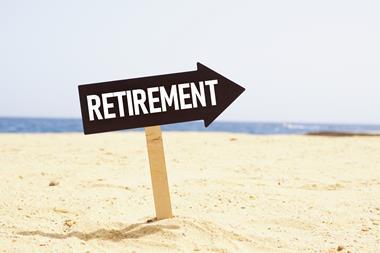Nick Patterson says we should consider alternatives in the rehabilitation debate rather than continue to throw money at claimants
We have reached, at long last, a stage in the insurance cycle where premiums for both liability and property are falling. Some long-awaited stability is afoot.
The broker market must be breathing a huge sigh of relief, though this can only be temporary respite from an ultimate increase in premiums. But why will this happen?
The answer is quite simply that insurers continue to struggle to control the cost of personal injury claims.
Lawyers' fees continue to remain a contentious issue and while the Association of Personal Injury Lawyers and its members appear to be willing to engage the insurance industry in this debate, it will only achieve fee certainty at a high level.
This in itself may not be a bad result but ultimately, unless there is downward pressure on professional fees, there will not be any meaningful price reductions.
The introduction of annuities to cover claimants' future loss of earnings continues to concern insurers mainly because of scarcity of supply. As demand increases, as it surely will when the courts begin to flex their muscles, prices will again surely rise.
There does not appear to be any new capacity coming into the market. Unless this changes there will continue to be pressure to push the cost of personal injury claims upwards.
There is also the looming time bomb of the recoverability of NHS charges under employers' liability (EL) policies.
Due to have been implemented in April this year, the government decided to postpone recoverability until April 2006 because of the fragile state of the insurance market.
It was predicted prior to April of this year that an additional 8% on premium charges would have been necessary had the government proceeded as planned. The delay will not have mitigated the impact on premium increases and no further postponements are considered likely.
Fair reflection
Some may argue that compensation awarded in personal injury cases still has some way to increase before it reaches levels that fairly reflect the pain and suffering of claimants.
Admittedly, a moot point, but there does not appear to be a clamour to reduce the levels of compensation awarded.
So what can be done?
The government has already identified that action must be taken to address the compensation culture.
The Compensation Bill will attempt to regulate claims farmers and make them more accountable for their working practices.
But there is a view that all this will do is provide a framework for such companies to become more efficient at what they do.
In effect, government is applying the bandage to the wrong cut. The emphasis must shift from paying compensation to rehabilitating the injured person.
In a move probably only noticed by rehabilitation sector workers and lawyers, the government has already recognised the need to increase the awareness of rehabilitation through the civil procedure rules which govern litigation.
Early intervention
It has achieved this by enshrining the rehabilitation code of conduct in the pre-action protocols to ensure that rehabilitation is implemented wherever possible.
But this still doesn't go far enough. Research has shown that the best results are achieved if rehabilitation is implemented at the earliest possible opportunity.
While it is possible to deliver positive outcomes a year or more after an injury occurs, there are usually increased cost implications in late notification.
We need a system that promotes a safe and speedy return to work in which all parties have participated. The process should require employers to "buy in" to the rehabilitation process and respect the rights of an injured employee to seek financial compensation.
The system is known as Vocational Rehabilitation and it requires face-to-face meetings, proactive management, case management, assessment, independence in delivery, and a team approach to the recovery of the ill/injured party.
Ultimately, medical fitness certification and a full return to work are desirable for all parties. It is particularly important to identify a realistic return to usual duties, as any failed attempt to return to work may have a subsequent impact on the injured party.
Why should we adopt this system?
The answer is quite simple - it is beneficial to all parties. Currently, within the UK's EL environment, a claimant seeks financial compensation but no additional support is usually provided.
Through the Vocational Rehabilitation system a claimant generally receives a reduced payment as general damages and financial losses are mitigated.
The quid pro quo is that they are able to retain their position in the workforce, maintain any social relationships and secure future earning power.
The employer retains a fully trained employee, enhances staff morale and reduces recruitment costs and any down time due to retraining.
Not sustainable
But how do we know it works?
The answer is that there are numerous examples of such systems being utilised throughout the world.
While they are not without their own nuances and possibly difficulties, they deliver effective solutions to what can be a confrontational experience.
There may be many barriers to the implementation of a holistic injury management/ vocational rehabilitation process in the UK. But simply offering financial compensation to claimants is not sustainable for the short to medium term without there being some major costs being taken out of the system - which is highly unlikely.
There has to be a system that puts people back together and recognises that financial compensation, albeit at a reduced level, is still warranted.
The good news is that the system exists and it's called vocational rehabilitation. We've just been slow to embrace it in the UK.
Now where have we heard that before? IT
' Nick Patterson is managing director of injury management firm Corpore
Hosted by comedian and actor Tom Allen, 34 Gold, 23 Silver and 22 Bronze awards were handed out across an amazing 34 categories recognising brilliance and innovation right across the breadth of UK general insurance.













































